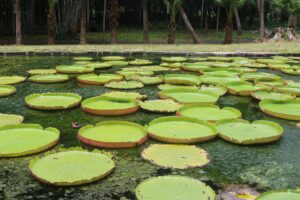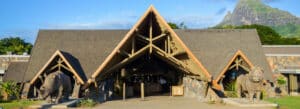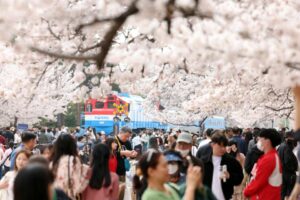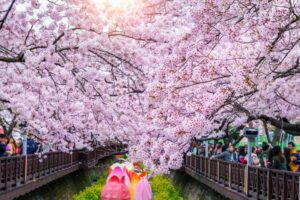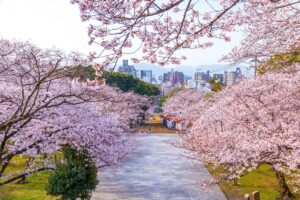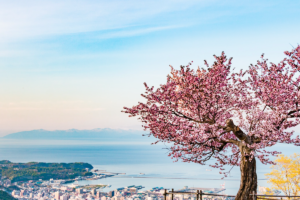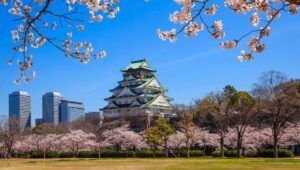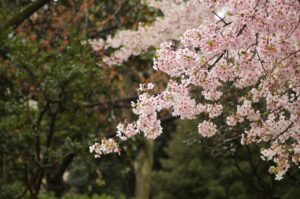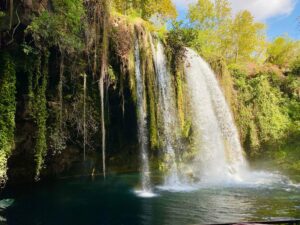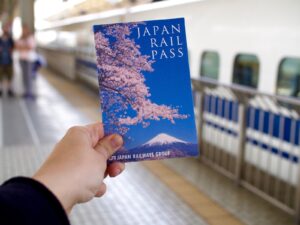The Sakura season in Tokyo is one of the most enchanting times of the year, captivating locals and visitors alike with its breathtaking beauty and cultural significance. Also known as cherry blossom season, it typically occurs in late March to early April, although exact timing can vary depending on weather conditions.
During this time, Tokyo transforms into a mesmerizing sea of delicate pink and white cherry blossoms. Parks, gardens, streets, and riverbanks become adorned with these ethereal flowers, creating a scene of unparalleled natural splendor.
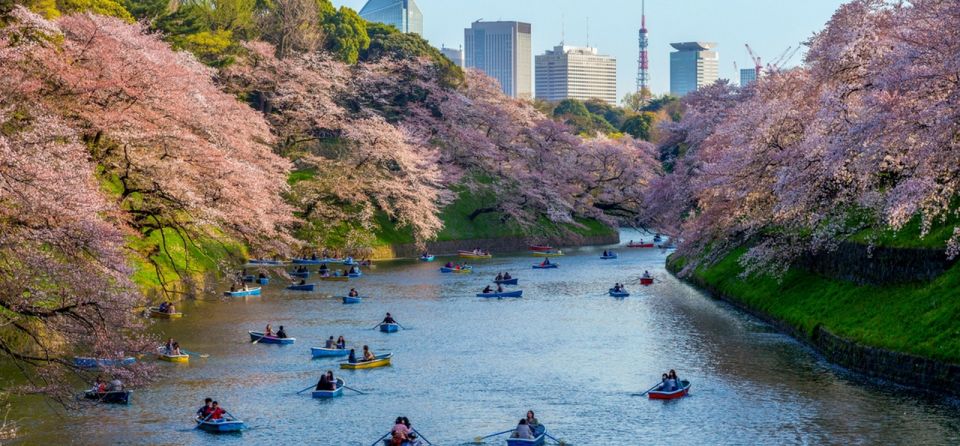
Iconic spots such as Ueno Park, Shinjuku Gyoen, and Chidorigafuchi are particularly popular for hanami, or cherry blossom viewing, where people gather beneath the blossoms to picnic, socialize, and appreciate the fleeting beauty of the flowers.
We’ve tried to create a detailed guide about the best spots in Tokyo, where you can fully enjoy cherry blossoms. Besides that, you can find updated forecasts, best day tours to join and types of sakura growing in Tokyo.
Japan Cherry Blossom Forecast 2024
Below you can find updated Japan sakura season forecast, provided by Japan Meteorological Corporation.
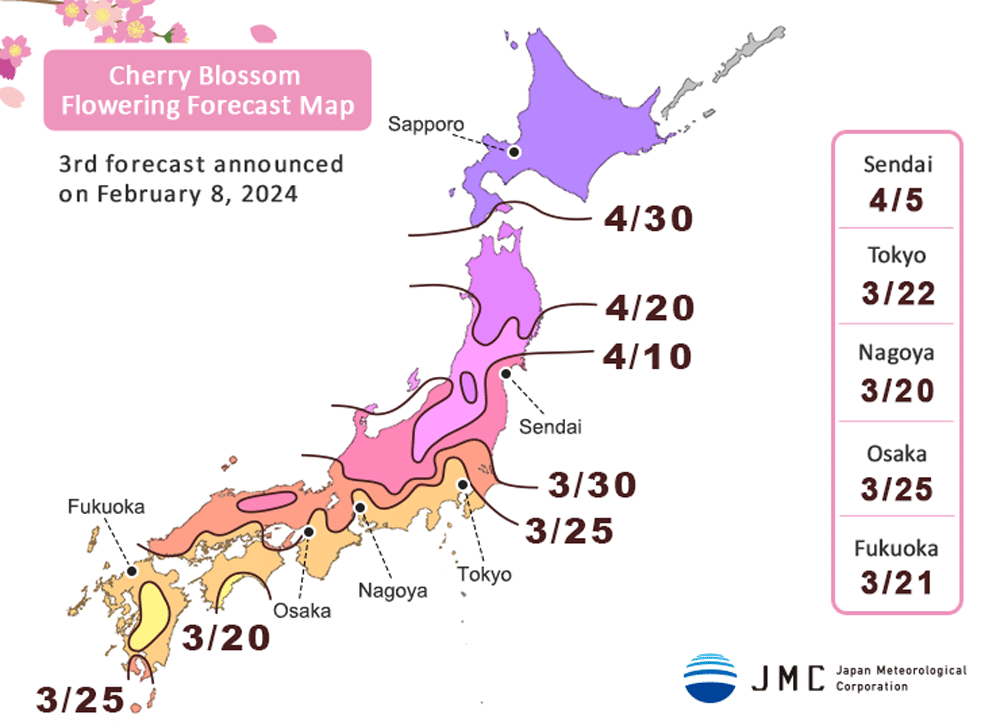
Spots in Tokyo to Enjoy Cherry Blossom
There are many places to visit in Tokyo during cherry blossom season. You can consider visiting those five mentioned below:
Showa Memorial Park
Showa Memorial Park, located in Tachikawa, Tokyo, is renowned for its stunning cherry blossom displays during Sakura season. The park spans over 160 hectares and features various landscapes, including open fields, forests, and lakes, making it an ideal spot for hanami (cherry blossom viewing) and outdoor recreation.
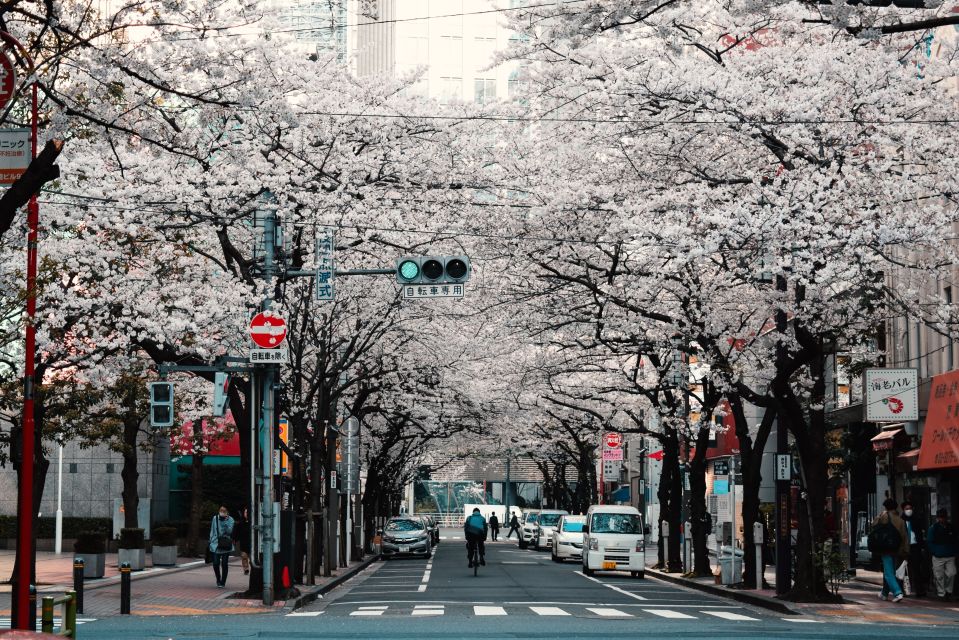
During cherry blossom season, typically in late March to early April, Showa Memorial Park becomes a popular destination for locals and tourists alike. Thousands of cherry trees of different varieties, including Somei Yoshino and Shidarezakura, adorn the park, creating a picturesque scene of pink and white blossoms against the backdrop of lush greenery.
- Address: 3173 Midoricho, Tachikawa, Tokyo 190-0014, Japan
- Working hours: 9.30 am – 4.30 pm
- Official website: https://www.showakinen-koen.jp/
Yomiuriland
Yomiuriland, a popular amusement park located in the western part of Tokyo, hosts an annual Sakura Festival to celebrate the beauty of cherry blossoms. Visitors to the Sakura Festival can participate in hanami picnics beneath the cherry trees, where they can relax and enjoy the scenic views while indulging in traditional Japanese foods and snacks.
The park often sets up special viewing areas and illuminated pathways, allowing guests to admire the cherry blossoms both during the day and at night.
If you want to buy tickets to Yomiuriland in Tokyo, check the prices and make your purchase on Klook.
- Address: 4015-1 Yanokuchi, Inagi, Tokyo 206-8725, Japan
- Opening hours: Mon, Sun – 9.30 am – 8.30 pm, Tue-Sat – 10.00 am – 8.30 pm
- Official website: https://www.yomiuriland.com/
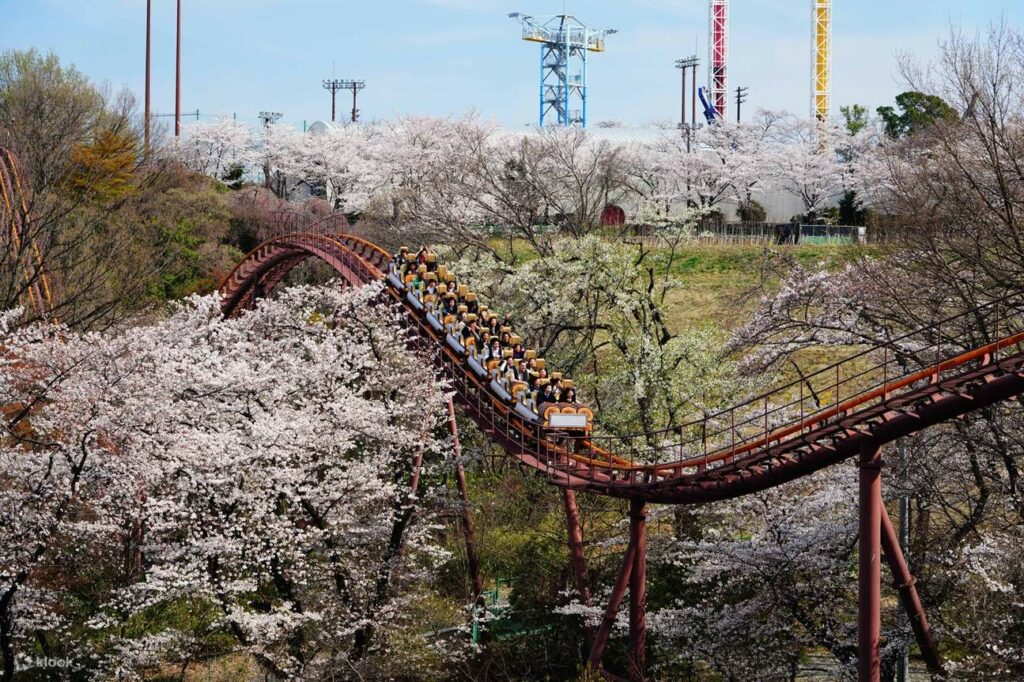
Jindai Botanical Park
Jindai Botanical Park, located in Chofu City, Tokyo, is known for its annual Sakura Festival, celebrating the arrival of cherry blossom season in a serene botanical setting. The park offers ample space for hanami (cherry blossom viewing) picnics and leisurely walks.
In addition to cherry blossom viewing, the Sakura Festival at Jindai Botanical Park often features a variety of cultural and educational activities related to Japanese flora and fauna. Visitors can participate in guided tours of the park’s gardens, attend workshops on gardening and flower arranging, and learn about the significance of cherry blossoms in Japanese culture.
- Address: 5 Chome-31-10 Jindaiji Motomachi, Chofu, Tokyo 182-0017, Japan
- Opening hours: daily, 9.30 am – 5.00 pm
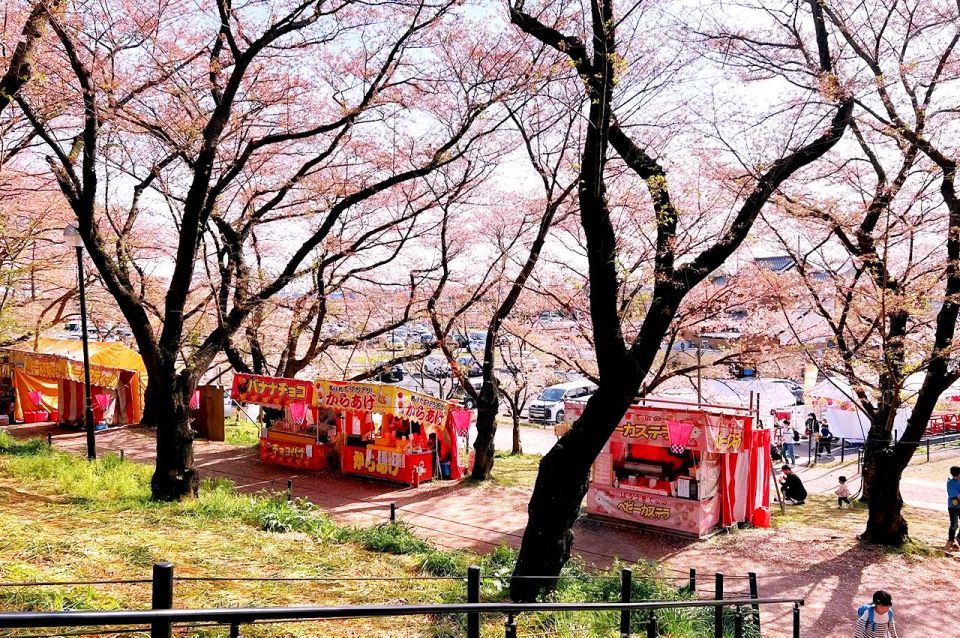
Chidorigafuchi
Chidorigafuchi is one of the most iconic cherry blossom viewing spots in Tokyo. Located near the Imperial Palace in the Chiyoda ward, Chidorigafuchi is a moat lined with hundreds of cherry trees. One of the most popular activities at Chidorigafuchi during Sakura season is rowing boat rentals.
In addition to boat rides, Chidorigafuchi offers walking paths along the moat, allowing visitors to leisurely stroll beneath the cherry trees and admire the blossoms at their own pace. This nighttime illumination adds an extra layer of enchantment to the already stunning scenery and provides a romantic setting for couples and photographers alike.
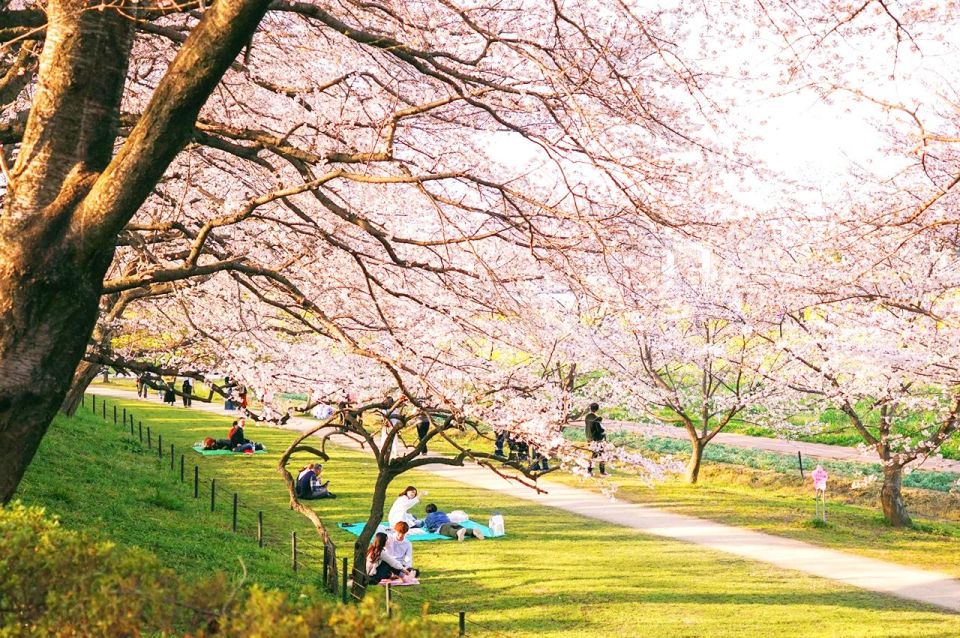
Ueno Park
This is one of the most popular places in Tokyo during cherry blossom season. People gather under blooming trees in Ueno park and enjoy food and drinks while admiring the blossoms. The festival often features cultural performances such as traditional music, dance, and theatrical shows.
These performances provide a glimpse into Japanese culture and add to the festive atmosphere. You can also participate in various Japanese cultural activities, such as tea ceremonies, calligraphy, and traditional crafts.
- Address: Uenokoen, Taito City, Tokyo 110-0007, Japan
- Working hours: 5.00 am – 11.00 pm
Tokyo Cherry Blossom Day Tours
Join Mt Fuji Day Tour from Tokyo with visit to panoramic views of lake Kawaguchi and Oshino Hakkai. Click here to book.
Tokyo Area Cherry Blossom Viewing Day Tour. Click here to join.
Private Cherry Blossom Experience with Local Host. Click here to get more details.
Can You See Cherry Blossoms in Tokyo Disneyland?
Tokyo Disneyland, like many other parks and public spaces in Tokyo, celebrates the arrival of cherry blossom season. While Tokyo Disneyland itself does not have cherry blossom trees within the park grounds, the surrounding areas and landscaping are often decorated to evoke the spirit of Sakura season.
During this time Tokyo Disneyland may feature special decorations, themed merchandise, and seasonal food and beverages that pay homage to sakura. Visitors can expect to see displays of artificial cherry blossoms, pink lanterns, and other floral decorations throughout the park, adding a touch of springtime magic to the Disney experience.
Additionally, cherry blossom motifs are incorporated into parades, shows, and nighttime spectaculars.
If you need ticket to Tokyo Disneyland, click here to book.
Cherry Blossom Varieties to See in Tokyo
Somei Yoshino (Yoshino Cherry): This is the most popular and widely planted variety of cherry blossom in Japan. These trees have delicate pale pink flowers with five petals and bloom in large clusters, creating a stunning visual display. They typically bloom earlier in the season and are the predominant type seen during hanami (cherry blossom viewing) in Tokyo.

Kawazu-zakura: Known for its vibrant pink flowers and early blooming, Kawazu-zakura is another popular variety of cherry growing in Tokyo. These trees often bloom in late February to early March, heralding the arrival of spring.
Shidarezakura (Weeping Cherry): Shidarezakura trees have graceful, cascading branches adorned with pink blossoms. Their weeping form adds a touch of elegance to parks and gardens, making them a favorite among photographers and visitors seeking a unique sakura experience.
Yaezakura trees are late-blooming, they produce double-layered or multi-petaled flowers, giving them a fuller and more luxurious appearance compared to other varieties. These blossoms can range in color from pale pink to deep pink, and they often bloom slightly later in the season.

